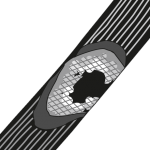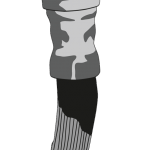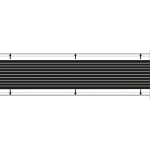The Proper way for checking and testing for faulty Brake Hoses
If you're researching your car's brake system, most articles will tell you the same scary facts up front: By the time you discover your car has a brake problem, it's usually too late. Fortunately, the brake system is pretty simple, and it's easy to learn how to check the condition of different brake components.
Properly functioning brake hoses are important for a safe ride
You car's brakes are dependent on pressure and friction -- that's what makes the wheels come to a stop. When you step on the brake pedal, that pressure has to move quickly to the four corners of the car, carried around by fluid-filled brake hoses and brake lines. Generally, the metal brake lines get more attention; they're even available in dressed up and high-performance variations. But the simple rubber brake hoses are just as important to your car's safety.
Visual Inspection and feeling the pressure in the hose for a safe working life of a brake hose should be checked by a certified or brake professional.
The most effective way to look for faulty brake hoses is to check them when they are under extreme pressure. WHY? Imagine brake hoses as arteries in the human body. A person could live a normal life with hard and restricted arteries, but it’s when they exert that symptoms arise. The same applies to brake hoses. Brake hoses could appear “OK,” but when they are subjected to extreme pressure in an emergency, they need to be in good condition to handle this sudden stress. Most booster assisted braking systems can reach pressures of approximately 1500 psi.
Things to Look for when doing a Visual Inspection of Hose and Installation
1. Cracks in the outer skin of the hose - May need to bend hose for this test.
2. Blisters or bubbles in the hose - have someone to assist you and pump the brake pedal so you can see this better
3. Chafe marks from the hose rubbing against something or some other components
4. Wet stains where the hose is starting to leak
5. Obvious bulging or expansion of the hose
6. Loose hose mounts or twisted brake line
What to feel for when doing your brake lines touch tests, it is best to compare the hose on your vehicle to a new hose. A hose in good condition will not…
- be hard and stiff
- be soft and weak
- expand under pressure
If one hose shows any sign of these conditions in comparison to the new hose, all hoses on the vehicle should be changed.
Some other symptoms which may indicate brake hose wear are:
1. Low or spongy brake pedal - may indicate old, soft and weak brake hoses which expand under pressure
2. Pulling to one side during braking - may be caused by one of the front brake hoses being blocked or restricted
3. Brake drag - may be caused by one or more restricted brake hoses
4. Intermittent brake problem - may be caused by a hose with an internal fracture creating a one-way check valve effect
Don’t Take The Risk - Replace and Be Safe!







Comments
Post a Comment